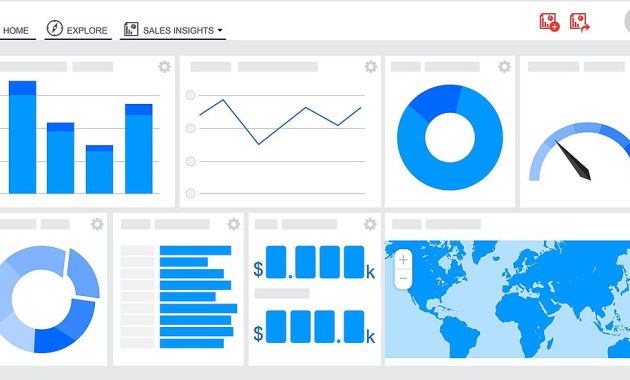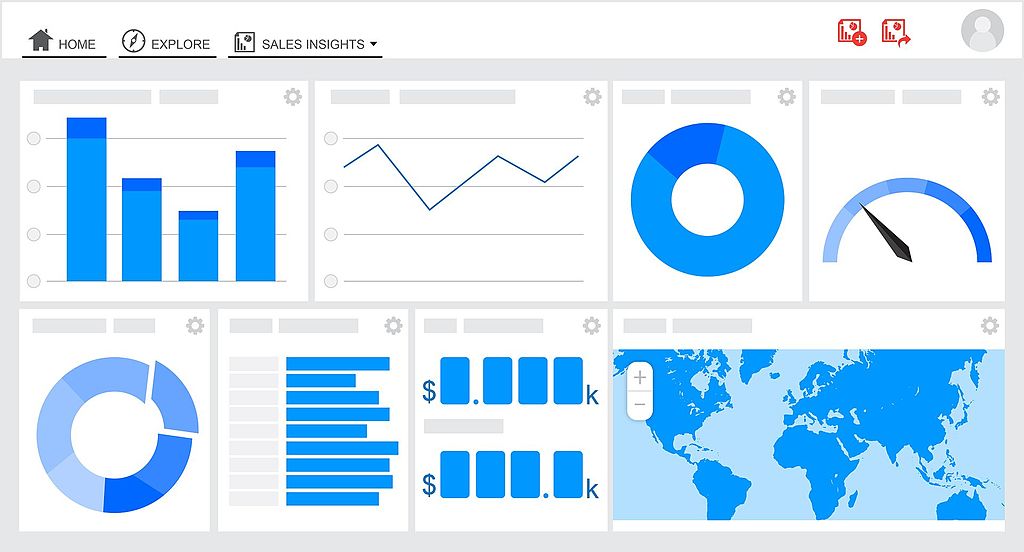
Learn to Use Business Intelligence Software for Faster KPIs: A Practical Guide
In today’s data-driven business environment, the ability to swiftly analyze information and make informed decisions is paramount. This is where Business Intelligence (BI) software comes into play. This guide provides a comprehensive overview of how to learn to use Business Intelligence software for faster KPIs, empowering you to transform raw data into actionable insights. The goal? To accelerate your Key Performance Indicators (KPIs) and drive business success. This article will cover the fundamentals, practical applications, and tips for effective implementation.
Understanding Business Intelligence Software
Business Intelligence software is designed to collect, process, and analyze large datasets. It then presents this information in a user-friendly format. This format often includes dashboards, reports, and visualizations. The core function is to provide a clear understanding of business performance. It allows for identifying trends, patterns, and anomalies. This is crucial for strategic planning and operational improvements.
The benefits of using BI software are numerous. They include improved decision-making, increased efficiency, and enhanced profitability. By providing real-time insights, BI tools enable businesses to react quickly to market changes. They also help optimize processes, and identify areas for cost reduction. The ability to monitor KPIs in real-time is a game-changer. It allows for proactive management and course correction.
Key Components of Business Intelligence Software
Several key components make up a typical BI software solution. Understanding these components is essential for effective usage. These include:
- Data Sources: These are the origins of the data. They can be databases, spreadsheets, cloud services, and more.
- Data Extraction, Transformation, and Loading (ETL): This process involves extracting data from various sources, transforming it into a consistent format, and loading it into a data warehouse.
- Data Warehousing: A central repository where all the processed data is stored. This allows for efficient querying and analysis.
- Data Analysis and Reporting Tools: These tools allow users to analyze data, create reports, and build dashboards.
- Data Visualization: The presentation of data in a visual format. This makes it easier to understand complex information.
Getting Started: Choosing the Right Software
Choosing the right BI software is a crucial first step. The market offers many options, each with its strengths and weaknesses. Consider the following factors when making your selection:
- Your Business Needs: What specific KPIs do you need to track? What type of data do you need to analyze?
- Scalability: Can the software handle your current data volume and future growth?
- Ease of Use: Is the software user-friendly, and does it require extensive technical expertise?
- Integration Capabilities: Does the software integrate with your existing systems and data sources?
- Cost: Consider the total cost of ownership, including software licenses, implementation, and training.
Popular BI software options include Tableau, Power BI, Qlik Sense, and Looker. Each offers different features and pricing models. Research and compare these options. Select the one that best aligns with your business needs. Once you have selected your software, the next step is to learn to use Business Intelligence software for faster KPIs.
Step-by-Step Guide to Using BI Software for KPIs
Once you have chosen your BI software, the next step is to learn how to use it effectively. Here’s a step-by-step guide:
- Data Source Connection: Connect your BI software to your data sources. This involves configuring the connection settings and providing the necessary credentials.
- Data Preparation: Clean and transform your data to ensure accuracy and consistency. This may involve removing duplicates, correcting errors, and standardizing data formats.
- KPI Identification: Identify the specific KPIs that are critical to your business. Define how these KPIs will be measured and tracked.
- Dashboard Creation: Build dashboards that visualize your KPIs. Use charts, graphs, and tables to present the data in a clear and concise manner.
- Report Generation: Create reports that provide detailed analysis of your KPIs. These reports should include trends, insights, and recommendations.
- Data Monitoring: Regularly monitor your dashboards and reports to track your KPIs. Identify any deviations from your targets and take corrective action.
- Continuous Improvement: Continuously refine your dashboards, reports, and data analysis processes. Seek feedback from users and make improvements as needed. The more you learn to use Business Intelligence software for faster KPIs, the more effective you will become.
Setting Up Your First KPI Dashboard
Creating your first KPI dashboard can seem daunting. But with the right approach, it can be a straightforward process. Here’s how to get started:
- Define Your Goals: What do you want to achieve with your dashboard? What questions do you want it to answer?
- Select Your KPIs: Choose the KPIs that are most relevant to your goals. Focus on a manageable number of KPIs to avoid overwhelming users.
- Choose Your Visualizations: Select the appropriate charts and graphs to display your KPIs. Consider using a combination of different visualizations to provide a comprehensive view of your data.
- Design Your Layout: Organize your dashboard in a logical and easy-to-understand layout. Use clear labels and headings to guide users.
- Test and Refine: Test your dashboard with real data. Get feedback from users and make adjustments as needed.
Advanced Techniques for Faster KPI Tracking
Once you have mastered the basics, you can explore advanced techniques to further improve your KPI tracking. These include:
- Data Automation: Automate data extraction, transformation, and loading processes to reduce manual effort and ensure data accuracy.
- Real-Time Dashboards: Use real-time dashboards to monitor your KPIs in real-time. This allows you to react quickly to changes in your business.
- Predictive Analytics: Use predictive analytics to forecast future trends and identify potential risks and opportunities.
- Collaboration Tools: Integrate collaboration tools to share insights and facilitate discussions among team members.
- Mobile BI: Access your dashboards and reports on mobile devices. This allows you to monitor your KPIs from anywhere, at any time. As you learn to use Business Intelligence software for faster KPIs, you will find these techniques invaluable.
Common Challenges and Solutions
Implementing BI software and using it effectively can present some challenges. Being aware of these challenges and having solutions in place can ensure smooth implementation. Here are some common challenges and how to overcome them:
- Data Quality: Poor data quality can lead to inaccurate insights. Implement data cleaning processes to ensure data accuracy.
- User Adoption: Resistance to change can hinder user adoption. Provide training and support to users to encourage them to use the software.
- Data Integration: Integrating data from multiple sources can be complex. Choose a BI software that integrates well with your existing systems.
- Lack of Expertise: A lack of expertise can slow down implementation. Consider hiring a BI consultant or providing training to your team.
- Scalability Issues: As your data volume grows, your BI software may face scalability issues. Choose a scalable solution that can handle your future growth. Successful businesses learn to use Business Intelligence software for faster KPIs by addressing these challenges proactively.
The Future of Business Intelligence and KPIs
The field of Business Intelligence is constantly evolving. New technologies and trends are emerging. Staying informed about these changes is crucial for maintaining a competitive edge. Some key trends include:
- Artificial Intelligence (AI): AI is being used to automate data analysis and generate insights. This can help businesses make faster and more accurate decisions.
- Machine Learning (ML): ML algorithms are being used to predict future trends and identify potential risks and opportunities.
- Cloud-Based BI: Cloud-based BI solutions are becoming increasingly popular. They offer greater flexibility and scalability.
- Data Democratization: The trend of making data accessible to everyone in the organization. This empowers employees to make data-driven decisions.
- Self-Service BI: Self-service BI tools allow users to create their own dashboards and reports. This reduces the reliance on IT departments. Staying current with these trends will help you learn to use Business Intelligence software for faster KPIs in the future.
Conclusion: Accelerate Your KPIs with BI Software
Mastering the art of using Business Intelligence software is a journey, not a destination. By understanding the fundamentals, choosing the right tools, and implementing effective strategies, you can significantly accelerate your KPIs. This leads to better decision-making and improved business outcomes. The ability to quickly analyze data and extract actionable insights is a critical skill in today’s competitive landscape. Make a commitment to learn to use Business Intelligence software for faster KPIs. This will transform your data into a powerful asset. This will drive your business towards success. [See also: Related Article Titles]
